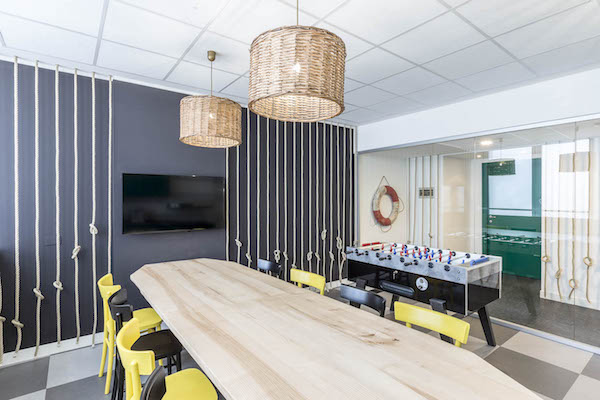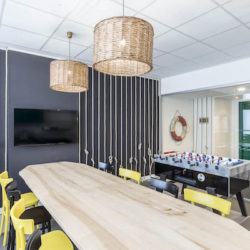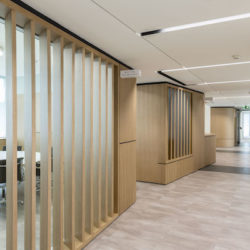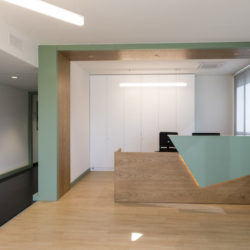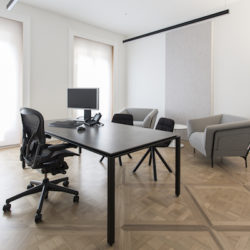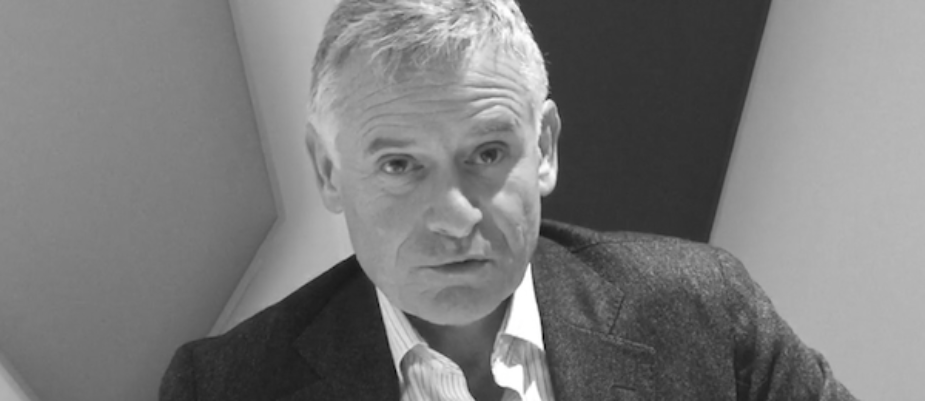
Design & Build is an integrated project management approach – mostly for workplaces and public premises – apparently highly appreciated by many large customers, as it makes procedures easier and gives better guarantees as far as lead-times and budget are concerned. It could even be synonymous with “turnkey contracting” for the kind of solutions offered, but there are a few major differences, as points out Philippe Sourdois, managing director at Tetris, a JLL company, European “Design & Build” specialist for the fit-out of offices and commercial spaces, also based in Italy since 2010.
Recently we hear a lot about Design & Build, sometimes confused with Contract, but there are substantial differences.
“A company complying with the D&B mode is different from a contractor, because all phases of the project are covered, from the first briefing meant to understand the customer’s needs through to the working plan including the administrative activities. But the D&B company can offer to its customer only some of these activities”.
So a flexible approach is one of D&B keys to success?
Exactly, the customer can ask for services they really need and count on us just for one or more parts of the whole process.
What are D&B benefits?
They are many of them, first of all different competences work in teams and in close contact, thus reducing downtime for approvals and the imposition of liabilities. Even the relations with suppliers are simplified, since the pre-arranged standard agreements avoid delays and legal expenses”.
Another major benefit for the customer is to have just one interlocutor and one invoice.
But its success is mainly due to a 20% time saving and the absolute guarantee that delivery date and budget are met.
“Tetris, in particular, offers benefits given by the strength of a reliable international group and synergies between its branches all over the world.
The same approach and one contract is for the customer a huge advantage in the carrying out of offices worldwide, for Tetris co-ordinates and applies the same standard in all countries. For example the design created in Italy for the International School was adopted adopted for the South Africa”.
What about the disadvantages?
A few detractors claim that in a D&B mode the project quality is lower, but what affects the quality of an architectural project is the budget. Actually, there are only advantages for the customer, all disadvantages are for the D&B company, entrusted with more responsibilities in every respect.
Interview by Renata Sias
In the photos some workspaces supplied by Tetris in Italy
1: Headquarters of a travel e-commerce company in Genoa (Break Area).
2: Headquarters of a communication and marketing company in Milan (Meeting Room Area).
3: Headquarters of a telecommunication company in Milan (Reception Area)
4: Headquarters of a finance company in Milan (Executive office

